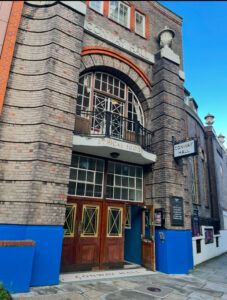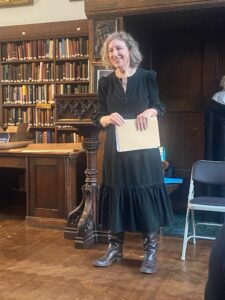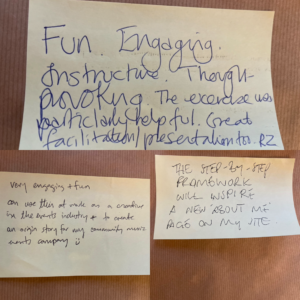Charity storytelling workshop

Thank you to everyone who came to my charity storytelling workshop at the Bloomsbury Festival this weekend. Run as part of the Wordstock event for the 26 writers’ group, it took place in the gorgeous wood-panelled library at Conway Hall.
I’ve long associated Conway Hall with storytelling, as for several years it was the venue for The Story, an eclectic event that gathered together storytellers of all stripes. So it felt good to be delivering my own take on storytelling at this special venue.

Conway Hall in Bloomsbury, the venue for the storytelling workshop
Why tell a story?
Storytelling is central to my charity writing work, as it’s such a powerful way to convey emotion and engage readers. I often use storytelling when I’m writing charity appeals for the Environmental Investigation Agency. Recently, for example, I worked with the head of the Tiger Team to write about tigers in India and Tibet who are threatened by poachers.
Five-step storytelling structure
In this workshop, I outlined my five-step charity storytelling structure, which offers a straightforward way to write a fundraising appeal. This involves establishing a character, outlining the problem the charity is facing, describing a critical moment, saying how the charity is taking action, and painting a picture of a brighter future.

Delivering the workshop in the wood-panelled library at Conway Hall
I asked people to pair up for an exercise where they wrote an appeal for the fictitious Ryde Raptor Rescue Centre on the Isle of Wight. (This was partly inspired by a visit to a real-life raptor centre this summer where I witnessed a flypast by two vultures called Bonnie and Clyde.)
Quick-fire drawings
We were exceptionally lucky that illustrator Lydia Thornley was on hand to capture her own quick-fire drawings of the event. Lydia and I have worked together for clients, and she also invited me along to the East End WI group not long ago to deliver a harp and creative writing session.
Before the workshop, I asked if Lydia would be able to draw me a picture of a raptor. When we met at the venue, she handed me a few print outs of different raptors, including kestrels and buzzards. I chose a photograph of a barn owl, its claws poised mid-air, and was amazed when Lydia presented me with this extraordinary sketch approximately 30 seconds later.

Andy Hayes holds up Lydia Thornley’s drawing of a barn owl
Here’s Andy Hayes, 26’s tallest man, holding the picture of the barn owl that Lydia drew. Andy also proved himself to be an exceptional human flip chart holder. He happily held up flip charts for me and collected feedback written on Post-It notes. No one could reach high enough to stick a Post-It note to his forehead, but he did have one stuck on the back of his jumper.
Was it useful?
I had some lovely feedback from the session. People said it was fun, engaging and thought-provoking. Some thought they might use the five-part storytelling structure for charity communications. Others said they could use it to write a new ‘About us’ page for their website, brand narratives, purpose statements and origin stories.

Feedback from the charity storytelling workshop
More
Do get in touch if you’d like me to run a similar session for you.
Also, read about:
- My work writing for charities
- The power of charity stories – work for The Goldsmiths’ Company
- How sound can tell a story – Mon Oncle by Jacques Tati